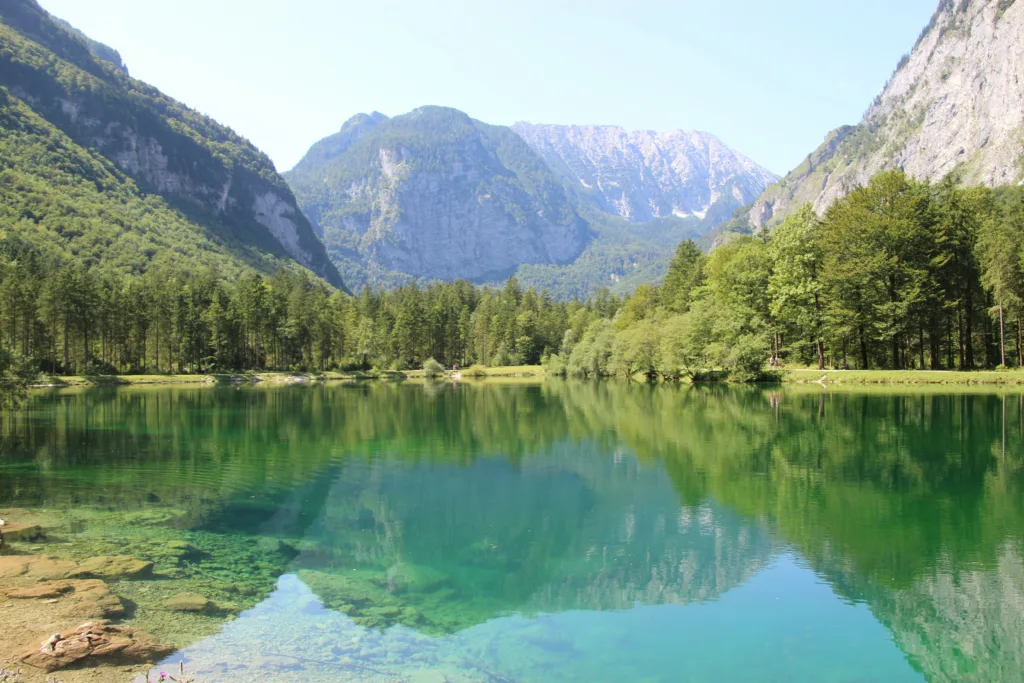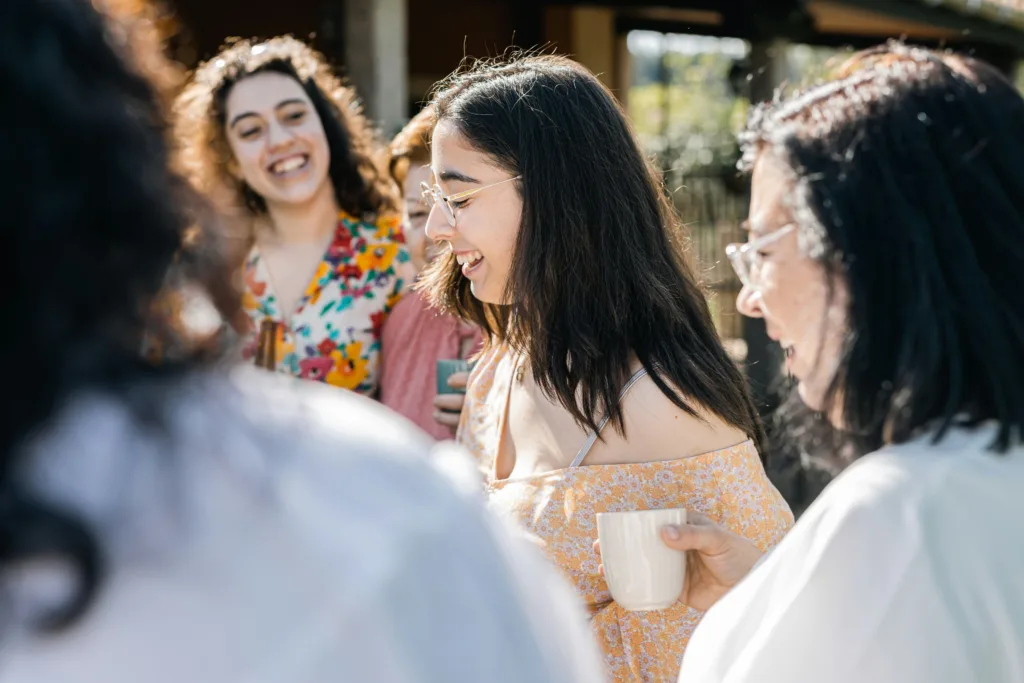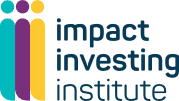
Tripple is a private investment company founded in 2018 by three siblings, Bec Milgrom and brothers Adam and Jake, to use capital as a force for good through a combination of investments and grant-making. It aims to provide a working example of what a 100% for-purpose investment portfolio can look like. Bec Milgrom is an Executive Director of Tripple and describes herself as ‘an impact investor and change-maker.’
Bec Milgrom talked to us about Tripple’s journey towards impact investing.
Where did the story start with Tripple?
About six years ago, my two brothers and I were in our 20s and 30s. We were each thinking about what we wanted to do in the world and how we wanted to use our energy. Like many of our peers, we had started to think more deeply about the state of the world and climate change in particular.
My older brother Adam had been working in impact investing for a couple of years, so we had started talking about the family wealth and the potential opportunities to use it as a force for good.
Around the same time that we were having these conversations there was a sale of a family asset. With those proceeds we started to imagine how we might do investment differently. That resulted in the creation of Tripple in 2018, which is a 100% impact-focused private investment company using a combination of investments and grant making for a better future for all.
What did the early days of that launch feel like?
We felt the least we could do as people with wealth was to use that wealth to try to create a better future for all. Over time, it has become more exciting to keep pushing the boundaries, but on Day One it felt like ‘Wow – we have got an opportunity to shift these dollars into impact and we just need to get there.”
It did not feel like we were doing something really interesting so much as something necessary. It felt very practical – a combination of responsibility and ability. And maybe if we did it and shared with others, we could help make it more accessible for others too. Because it will seem less scary if they are not the first people on the dance floor.
How did you set up the strategy after the property sale?
We have two theories of change: to use our capital as a force for good and to bring others along on the journey.
In order to be an example to others, we built an intentionally ‘vanilla’ portfolio in terms of asset allocation and risk profile, that was 30% invested in public equities, 25% in real assets and 25% in alternative assets with a small allocation to fixed interest and cash. We then placed an impact lens over it.
That involved using our ‘Impact Calculator’, modelled off the Impact Management Project 1.0. This ranks opportunities across different asset classes and impact areas and assigns them an impact score of between -1 and 5. So ‘-1’ is investments with direct exposure to activities that may harm people or the planet and ‘5’ is investments that create system change to avoid harm to people or planet happening in the first place.
We decided every potential investment had to get past our impact screen and achieve a score of at least “avoiding harm” in order to go to full financial due diligence – which was a pretty wild reversal of how things were normally done.

In 2018, were there any resources that were invaluable?
We were very lucky to have a network of people around us in the early years. Berry Liberman and Danny Almagor run a family office in Australia called Small Giants. They have really led the impact investing movement in Australia and run a programme called ‘Journey to Impact’, which educates and empowers wealth-holders to explore the alignment of wealth with values and help them inspire others to do the same. Having them in our inner circle in the early days was invaluable. Toniic, which is a global community of asset owners seeking to have impact across the spectrum of capital, has also been a huge influence on us.
Early on, I also went to the Katapult FutureFest in Norway and discovered there was already a community of people doing this work and pushing boundaries that we could not even imagine pushing at the time. So that was also really inspiring.
How did you bring in investment professionals to support this activity?
We decided early on that we did not want to work with a financial adviser at first because we wanted to learn ourselves and we did not feel like we could achieve our goals if we went with traditional investment advisors.
So in the first two years, there were just the three of us asking a lot of questions of people in our networks, and a lot of ‘learning by doing’. We agreed that we would move at the pace of thoughtfulness. In other words, although we had an eagerness and felt urgency to deploy the capital, we also wanted to be making really good decisions. Plus, there was not a lot of deal flow back then. We were probably seeing two deals a week, which we could handle with a meeting every fortnight.
Two years in, we brought in an investment associate and an executive assistant to help us. and we worked with them for another year. Then in 2022-2023, we brought in two additional team members – a general manager and a part-time philanthropy lead for our grant making. So we now have a team of three and a half. Jake, Adam and I are all part-time – one or two days a week each – and act as active board members.
How have you chosen which areas of impact to focus your investment activities on?
We take an agnostic approach – we seek to maximise the positive impact of our investments but not specifically in any one impact area. In terms of invested capital: responsible consumption and sustainable cities account for around two-thirds of the portfolio – reflecting some large holdings in real assets and public equities. But if you break the portfolio down by type of holding, we are very evenly spread across these and other themes, such as health, social justice, clean tech and the future of food.
What is the focus of your grant-making?
We allocate 2% of our capital each year to ‘systems change’ that we cannot achieve through investment. So that can include work around policy, advocacy and narrative shift and movement building. For example, we have supported the Grata Fund, a non-profit advocacy group which amongst other strategic litigation work, is helping a group of Torres Strait Islanders take a case to the United Nations alleging that the Australian government has underserved Torres Strait Islanders with its climate change policy.
Sometimes our grants are related or correlate to the areas we are investing in but often they are not at all connected. So, we have recently given a grant to a transgender justice movement. That has no correlation to our investment work, but for us there is a huge need for support in that space to make sure everyone is free to be healthy, happy and exist in the world.
How do you think about the relationship between impact and financial return?
The past five years have absolutely proved to us that you can have an impact lens over your investments and any risk/return profile. You can find high impact opportunities in a really vanilla portfolio or a really high-risk portfolio – the breadth of opportunity is there, so choose what you want.
That said, you need to ask why you are targeting a certain level of returns. For foundations that have a mandate to give away a percentage of their capital each year, there is usually a very clear need for returns each year to meet those requirements. But as a private investment company, there is a big question around the purpose of your money.
So, for example, we have chosen a long-term return target of 6-8%, prior to our grant-making. That rate is enough to employ a team of inspired, value-driven, and imaginative people and give them ongoing capital to deploy. In other words, for us, it is not about maximizing our financial return.

How are different asset classes allowing you to access different investment opportunities?
There are certainly different levels of impact and return to be achieved in different asset classes. Public equities have historically been our biggest allocation, but they are not going to change the world. So recently we have been working to rebalance the portfolio towards asset classes with higher impact opportunities.
There are some amazing opportunities in fixed interest where the returns and the impact are great but the market just does not know how to handle them. To take one example, we are invested in an Aboriginal-run and culturally appropriate school here in Australia. Although the college had an income stream verified by the government once it opened, it could not get access to infrastructure funding so we have twice lent to them to help finance the building of infrastructure. .
So there are spaces where the market just is not filling the gap. There is also room for catalytic capital where the risk and return are not matched but there is an opportunity for outsized impact. We have an allocation to catalytic capital in each asset class. We are aiming for the portfolio to have 25% allocations to equities, real assets and alternatives respectively, just under 20% in fixed interest and the rest allocated to cash and grants.
Do you feel there is still a misconception about the level of financial return that can be achieved with an impact-first approach?
There is still a long way to go to break down barriers to show you can be thoughtful AND successful – whether that success is financial or however else you define it. We still meet people whose response when we say we are values-driven is “Well you must not have much financial acumen, then”. When we say ‘impact’, they still hear ‘concessionary.’
We only have a five-year track record so there is only so much we can say to that. But we are seeing that impact opportunities are the same from a financial risk/return perspective as every other opportunity. You do not have to sacrifice whatever level of return you want for impact. However, if you want to take some risks on that traditional risk/return profile, there is additional impact to be captured.
You have achieved so much in five years – what previous skills did you bring to Tripple?
Adam, Jake and I all worked in business and had decent financial literacy but only Adam had investment experience. My background is in marketing. But our knowledge has come from learning by doing and the people we work with. We have 100-plus organisations in our portfolio to whom we are constantly talking and learning from.
Every investment for us is about asking “Do we believe in the team? Do we believe the problem they’re solving is big and important? And do we believe their solution could work?” We meet with a lot of organisations and only end up investing in about 5% of those we take initial meetings with, which means we also get to learn a lot from those companies even if they do not fit in the portfolio.
We are constantly trying to ask the question: “What does it mean to use capital as a force for good?” A constant willingness to learn and continuously improve is very much in our DNA but we do not have any special skills.
What do you see as the obstacles that individuals like you continue to face as you try to do things differently?
We need more people doing this work because we will never be able to fund it all. And there is a huge difference between impact investors versus non-impact investors investing in a purpose-driven impact company. Having mission-aligned investors gives entrepreneurs the encouragement to focus on their purpose and find the right business model to ensure financial success whilst maintaining the mission at the centre of the organisation which we believe will lead to better long term success on every front.
What is your advice to someone who is right at the beginning of this journey?
Start with your ‘Why’ and your values and keep coming back to them. For example, our values are that we are thoughtful, inclusive and driven by the need for a just and sustainable future for everyone. Then when you are trying to make decisions – including investment decisions – remember that everything you do should be an expression of you and your values.
Second, surround yourself with the people who are already in the same boat and will cheer you on. The right values and the right people: whenever we come up against sticky moments, those are what gets us through.
